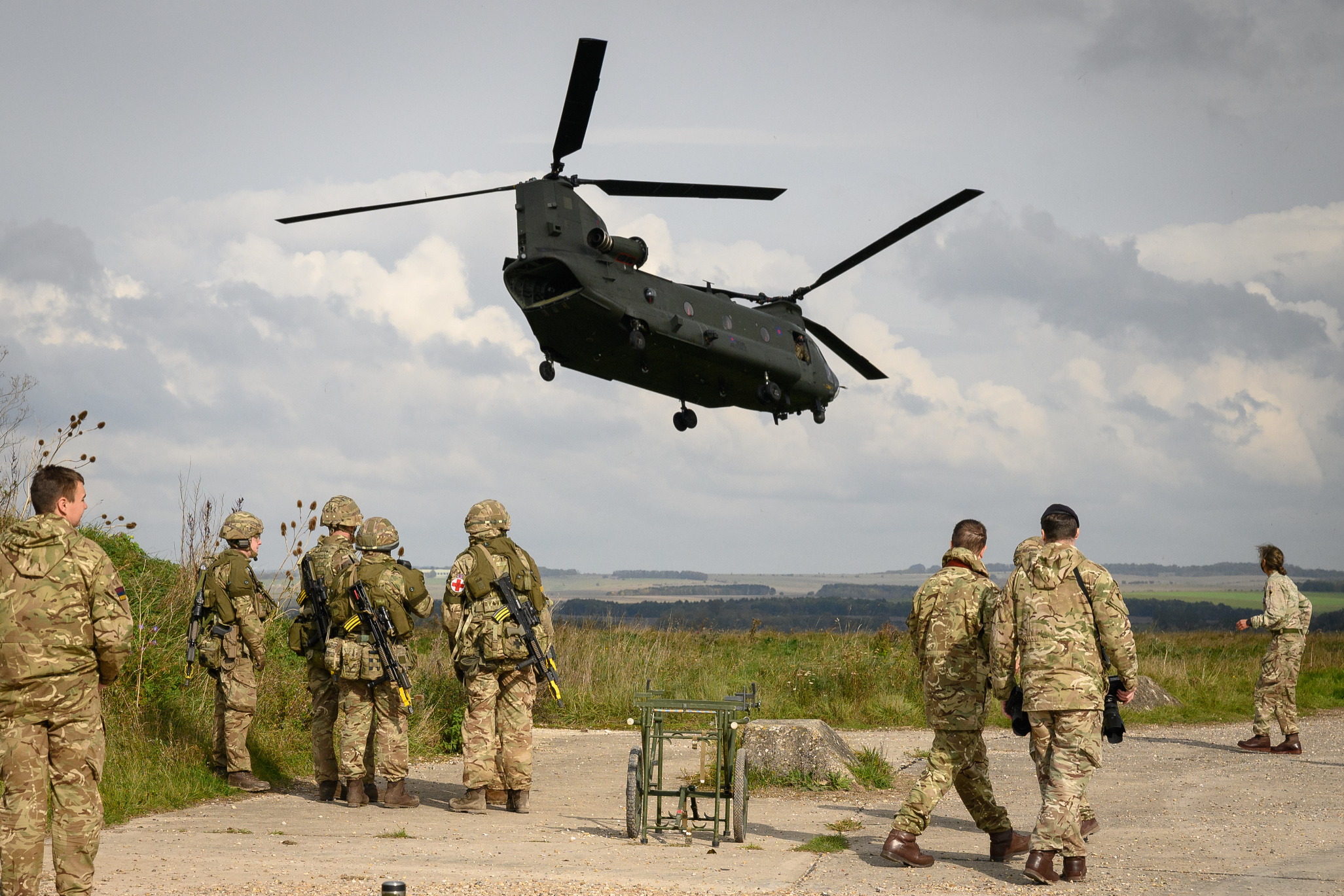
Harry Halem has narrated this article for you to listen to.
How safe will this country be under Labour? The Strategic Defence Review (SDR) is supposed to provide the answers. It hasn’t been published yet, but may already be out of date. It’s expected to make the case for defence spending to rise from 2.3 per cent of GDP to 2.5 per cent – but that won’t be enough for Donald Trump, who has asked allies to devote 5 per cent of their national wealth to the military. And it’s not only what we spend but how we spend it that the government are struggling to get right.
The upcoming SDR will be the fourth review in a decade. On past showing, it will very probably fail to focus on the right questions, let alone give the right answers, on how to rebuild Britain’s military. Too often, defence reviews fixate on strategic questions, which they frequently get badly wrong, and avoid defence questions, which are far more important to get right. Reviews by David Cameron, Boris Johnson and Rishi Sunak each sought subtly to integrate security, defence, foreign, trade and other policy considerations – which detracted from complicated planning.
AI targeting will accelerate response times and force militaries to rethink operations at every level
We need a review which starts by looking at and understanding what’s been happening in contemporary conflicts, particularly Ukraine. Many wars come to be defined by novel technology. The first world war was the war of the machine gun, the tank (in its later stages) and of tinned food – which enabled soldiers to hunker down in trenches for months. The second world war was the first to be fought as much in the air as on the ground. More recently, the first Gulf War introduced precision bombing with the aid of satellite images.
The conflict in Ukraine may at first appear to be a traditional grubby war of attrition. Yet it has made its own mark on history as being the first war of the drone and of sophisticated reconnaissance methods involving artificial intelligence. While the Germans pioneered the use of pilotless bombs during the second world war, they were dumb hit-or-miss affairs. The Ukraine war is the first war in which both sides operate a combat system that synthesises reconnaissance data, translates it into active targeting information and allows artillery, drones and missiles to attack the enemy.
Russia and Ukraine employ tens of thousands of drones, mostly civilian-grade, along the front line, using even small, cheap quadcopters to destroy tanks that are orders of magnitude more costly and sophisticated. More remarkable still is the Ukrainian and Russian ability to collect drone and satellite data. Dozens of screens dominate a modern company command post – a small unit of around 100 soldiers – rather than traditional radios and maps. When combined, modern drone and satellite surveillance techniques provide an enormous amount of battlefield information. This makes it much more difficult for attacking units to hide as they advance.
Not all reconnaissance data, however, is useful. Much of the footage is of empty fields or obscured tree-lines. Data bombards commanders at every level; the danger is that information overload will simply freeze units, preventing rapid decisive action to exploit the opportunities better reconnaissance provides.
This is where AI comes in. Ukraine has used AI to analyse public satellites, social media and other data to identify Russian targets. Both sides, meanwhile, use AI to guide drones, especially when jamming makes it difficult for human operators.
On military AI, the US and Israel lead the way. The Pentagon’s highly classified Project Maven synthesises data from multiple sources, identifies a target and likely suggests engagement options. This greatly reduces the tasks a human must conduct. Israel has used AI to target enemies throughout its war with Iran’s proxies, allowing it to quickly conduct an enormous number of air strikes, particularly in Lebanon, which broke Hezbollah’s command structure.
The technology is in its early stages and is far from being perfected. As of early last year, Project Maven allegedly only identified targets correctly around 60 per cent of the time in good weather and 30 per cent of the time in poor conditions, compared with an 80-plus per cent accuracy rate for human operators. Regardless, the trend is clear: AI targeting will accelerate response times and force militaries to rethink operations at every level.
A third development to come out of the wars in Ukraine and the Middle East is the advance in deception and disruption techniques, whether physical, electromagnetic or otherwise, to confuse an enemy reconnaissance system. Basic deception measures such as decoy tanks can defeat attacks by relatively unsophisticated drones. More advanced weapons require more sophisticated responses, from dummy electronic signatures to various forms of spoofing. The more reconnaissance assets that can be disrupted or deceived, the more advanced weapons that will end up being used against fake or low-value targets, reducing the enemy’s overall combat power.
None of these technologies is new. Reconnaissance drones have existed since the 1980s, reconnaissance satellites since the 1960s, and various forms of automatic targeting – whether heat-seeking, radar-guided or otherwise – since the late 1940s. Rudimentary electronic warfare systems were used during the second Boer War, and sophisticated ones were common in the Cold War. But this combination of reconnaissance drones, satellites, AI and electronic deception has created a rapid, lethal modern battlefield.
Those carrying out the SDR will need to consider the implications of these developments. Defence Secretary John Healey has shown he’s prepared to look ruthlessly at the military afresh. At the end of last year he announced he was retiring HMS Albion, HMS Bulwark and HMS Northumberland, as well as tens of Puma and Chinook helicopters and Britain’s fleet of Watchkeeper reconnaissance drones. The cuts will free up £500 million to be spent elsewhere. The items for the chop are either ageing, obsolete or laid up due to a lack of personnel. The Watchkeeper drone, for instance, was first deployed in 2019, but advances in technology have already rendered it out of date.

An effective SDR needs to focus on three things: improved reconnaissance capabilities, both through unmanned systems and satellites; AI-enabled targeting; and improved deception techniques. But it should not stop there. The use of drones and satellites is exposing new vulnerabilities, not least in space. In any future war, the UK’s adversaries could target western satellites, with a potentially devastating effect on our military capabilities, as well as causing catastrophic failure in civilian communications and transport.
Russia, China and Iran are all preparing to fight such a war. Russia has already fielded sophisticated jamming capabilities in Ukraine. It hacked civilian-grade communication satellites at the beginning of its invasion. Since then, Elon Musk’s Starlink satellite constellation has proved an extremely responsive way of controlling drones and is harder to jam. Nevertheless, we can’t assume western technological superiority will last.
Russia considered placing – or may even already have placed – a nuclear device in space that, if detonated, could damage satellites across the world, and would cripple satellite coverage near the blast. China’s anti-satellite programme has existed since the early 2000s. The People’s Liberation Army has fielded a spaceplane that could be equipped with anti-space weapons. It has deployed nearly 1,000 satellites over the past decade, some of which could be armed. Iran is farthest behind, but it has improved its jamming techniques and may well receive anti-satellite assistance from Russia and China. Somehow, we will have to defend the satellites on which modern technology depends, as well as our capabilities on the ground.
Britain is a long way from being ready to fight a modern war. Our military exercises do not incorporate even a few hundred small drones. We have developed a capability for rudimentary military AI only in the past few years. We have a limited quantity of spoofing, jamming and other deception-related equipment. We are overwhelmingly reliant on contractor-operated satellites or US support. All these technologies must be rapidly brought forward.
The use of drones and satellites is exposing new vulnerabilities, not least in space
As we’ve seen this week, most political debate over Britain’s military policy revolves around funding. But that misses the point. A wartime military is orders of magnitude larger than a peacetime force. No country can be expected to field a peacetime military that meets wartime requirements.
Moreover, while the armed forces need a serious cash injection, when war begins, budgetary and societal constraints typically dissipate. Rather than fielding an unfeasible war-scale military, contemporary British defence policy must put our military in a position from which our capabilities can be rapidly scaled up if war becomes unavoidable. Experience is key: our armed forces need a hard core of peacetime professional soldiers who have thought through the complex problems of modern combat and can help transform tens of thousands of civilians into soldiers who can fight in units capable of surviving modern battlefield conditions. Ukraine’s experience is illustrative. The war really began in 2014 with the annexation of Crimea. Eight years of conflict between then and 2022 created several hundred thousand combat veterans whose specific skills, from drone operations to combat medicine, allowed the Ukrainian military to fight a much larger power.
We can’t afford to waste another SDR. The current phase of the Ukraine war will end in the next 18 months, either with a negotiated settlement or – improbable but still possible – Ukrainian defeat. But as Sir Patrick Sanders said last year when he was head of the armed forces, we are in a pre-war world. Regardless of how the Ukraine war is settled, it will remove the final barrier to direct confrontation between the UK, Europe and the authoritarian axis. A failed SDR, one that does not prepare the British military for war, will expose the armed forces and ultimately the country to the brutality of large-scale combat. Modern war, despite its industrial scale, may be lost in an afternoon if one side makes eminently predictable mistakes.








Comments